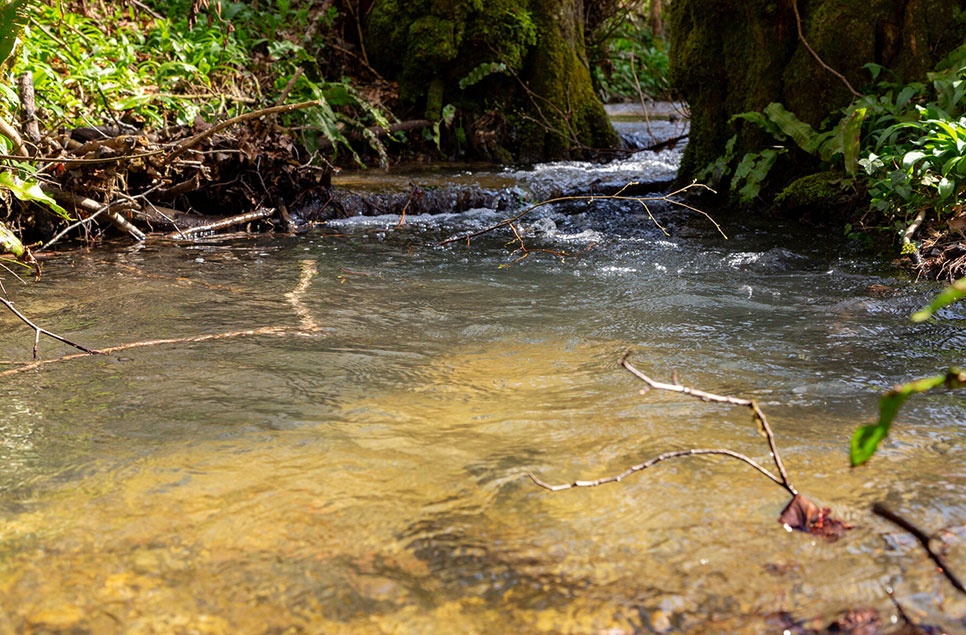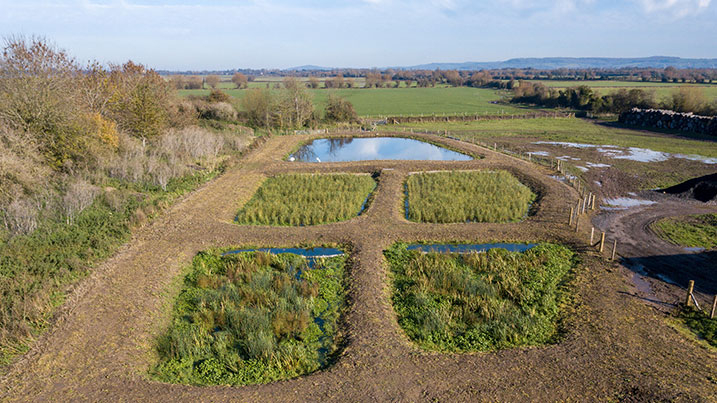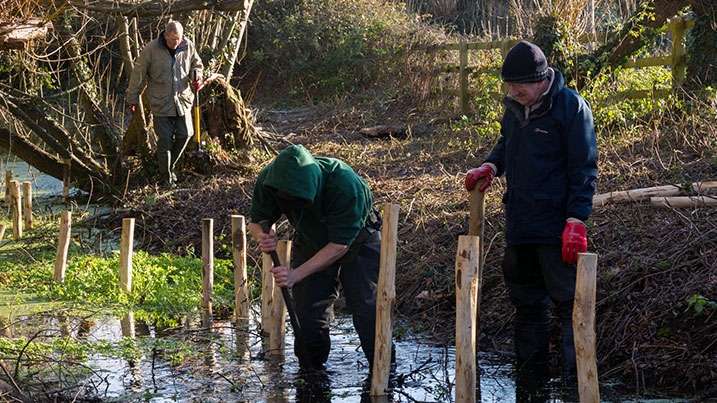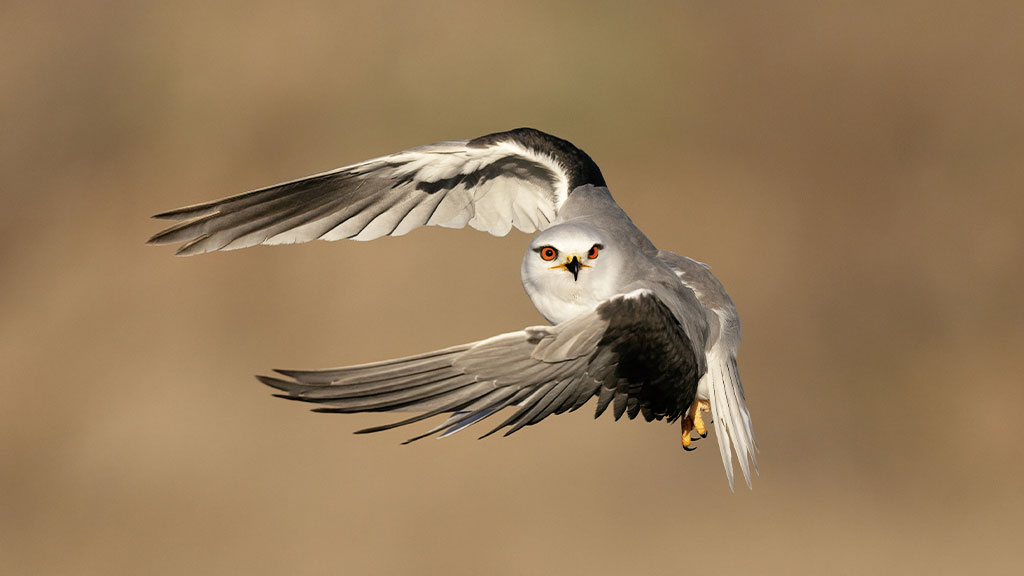How wetlands help keep rivers clean (and how you can too)
How healthy is your local river? Would you know just by looking at it? Find out how what you can do if you suspect your stream has seen better days, and the role of wetlands in keeping our waterways clean.

How healthy is your local river? Would you know just by looking at it?
In the latest issue of Waterlife, our members' magazine, we took an in-depth look at why there might be more than meets the eye when it comes to spotting the signs of river health. River water quality is a problem that needs to be solved, with The 2020 Environment Agency report showing that only 16% of waterways - rivers lakes and streams - are classed as in ecological good health, and rivers come off worst. There has been no change in the last five years, despite calls for interventions.
It’s not all been bad news for our water - water quality around the coasts has improved in recent years, thanks to awareness-raising and campaigning by NGOs. And some pollutants in our freshwater like ammonia and organochlorine pesticides have been cut down dramatically since the 90s, as farmers are now using alternatives, allowing species like the otter to make a slow recovery. But there is still a lot of work to be done.
In the last five years, there has been a steady rise in the number of water pollution incidents, from fewer than 6,500 in 2015 to almost 7, 600 in 2019.
James Bevan, Chief Executive of the Environment Agency, 2 October 2020
How wetlands help keep our rivers clean
One of the biggest problems at the moment is nitrates from fertiliser entering the river, causing excessive plant growth and essentially unbalancing the ecosystem, choking out aquatic life such as fish and invertebrates. Other agricultural products like pesticides and herbicides are also killing off invertebrate life, key elements of a healthy river system.
Wetlands can be used as filtration systems to remove these pollutants and fertilisers from the water that flows off the land, before they reach the rivers. Wetland treatment systems involve mimicking naturally occurring features: deep pools allow sediment to settle at the bottom, trapping the unwanted substances there, and emergent plant life like reedbeds and marsh flowers absorb nitrates. The benefits of this particular wetland system don't just end there however, as the mosaic of habitats attract many different species like frogs, dragonflies, bats and birds.

Wetlands are already in use at many of our sites as treatment systems. They’re also used by corporate businesses like Glengoyne Whisky Distillery in the Trossachs National Park, Scotland, which has effectively reduced their waste by 25% while making a home for beetles, bats, water voles and more.
Indicators of poor wetland health
- Lots of sediment
- Dead fish
- Lack of key indicator invertebrates
- Choked by aquatic plants
- Excessive algae in summer or hot weather
- Evidence of oil leaving multi-coloured films on the surface of the water
- Smell and litter
- Low or no flows in river or stream (drought)
- Visible drains that deliver road run-off straight into the water
If you think your local stream or river is in poor health
- One of the best ways of telling the health of your stream is to take part in an invertebrate survey. As a citizen scientist, you can provide valuable data about the health of your local stream by undertaking riverfly surveys. This is a fun activity for children to get involved with too. Find out more about riverfly surveys
- Alternatively, if you don’t want to go to the lengths of doing some citizen science just yet, you could go for a pond dip and see what you find there. Our pond dipping guide should help you identify what you find: in general, stoneflies, caddisflies and mayflies are positive signs.
- If you think your stream or river is in a poor state, you can contact your Local Authority and/or the Environment Agency to register your concerns. Local Authorities sometimes have dedicated staff (ecologists but more likely parks people or similar who will be in part responsible for streams/rivers). The EA has Biodiversity Officers who would be worth contacting for information on the watercourse in question.
- There are also many local groups already established that are concerned with urban wetlands and again LAs should know about these. You can try contacting your local conservation charity to find a group to get involved with, as many run ‘outfall safaris’ or stream daylighting projects. Or set up your own River Care group. You can find out more on the Environment Agency's website.
- Slowing the flow from your building or garden can also help improve water quality. You can do this by putting in green roofs, wetland features like rain gardens and drainpipe mini-wetlands, and more. We have a range of tutorials on our website to suit different spaces.
- One thing you can do to combat the use of pesticides is to buy organic. As this is a pricier option we know it’s not available to all, but if you are able to choose this option then it sends a message to supermarkets and producers.
- Plastic pollution is a huge problem in rivers and streams, choking up waterways and leaching chemicals into the water over time. Next time you’re out on a river walk or swim, you could bring a bag along to do a litter pick much as you would on the beach.
- You can also make a difference by being aware of the chemicals you put down the drain. It’s not always possible, but we have a list of the worst water offenders and what you can do instead to help you pick your products.
- You can also practice good swimming etiquette – for you and your pets. Some sunscreens contain toxic chemicals, and flea treatments for pets that are banned in agricultural products are powerful insecticides. So make sure that you’re not bringing anything but yourself into the water with you, and check your boots and clothes for any vegetation that you might unwittingly transfer to other waterways. Fragments of fast-growing invasive species are easily transferred to other water bodies.




